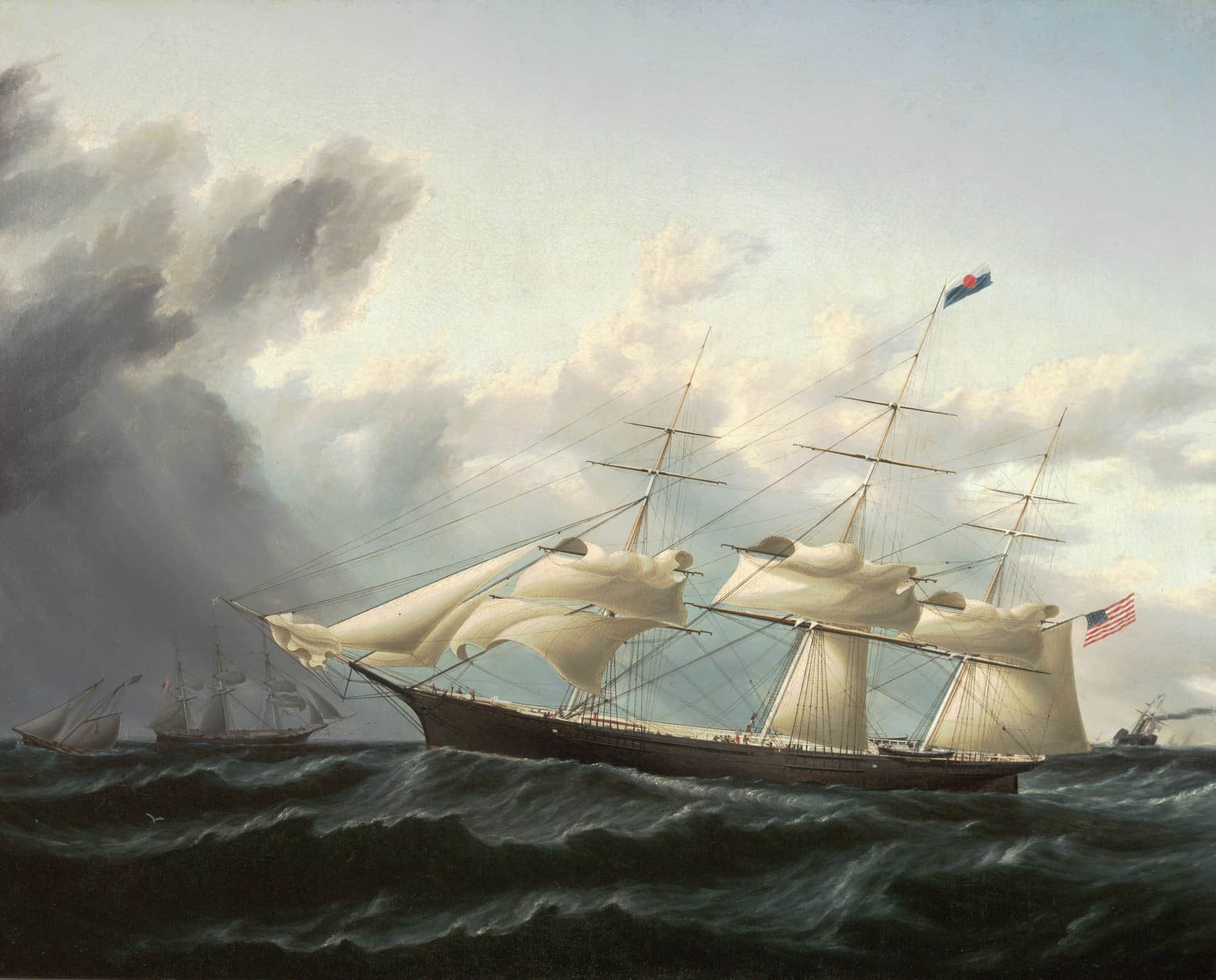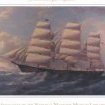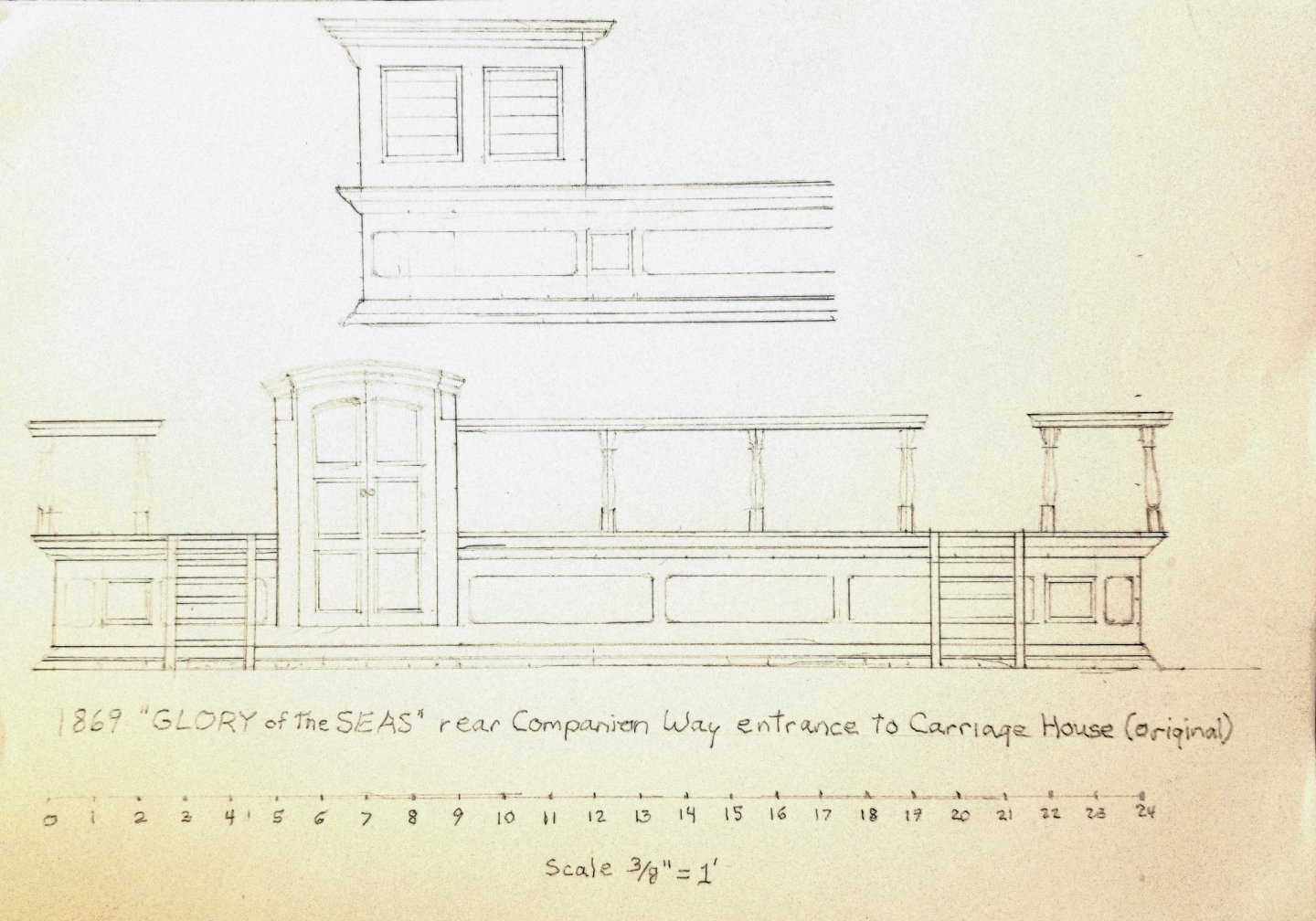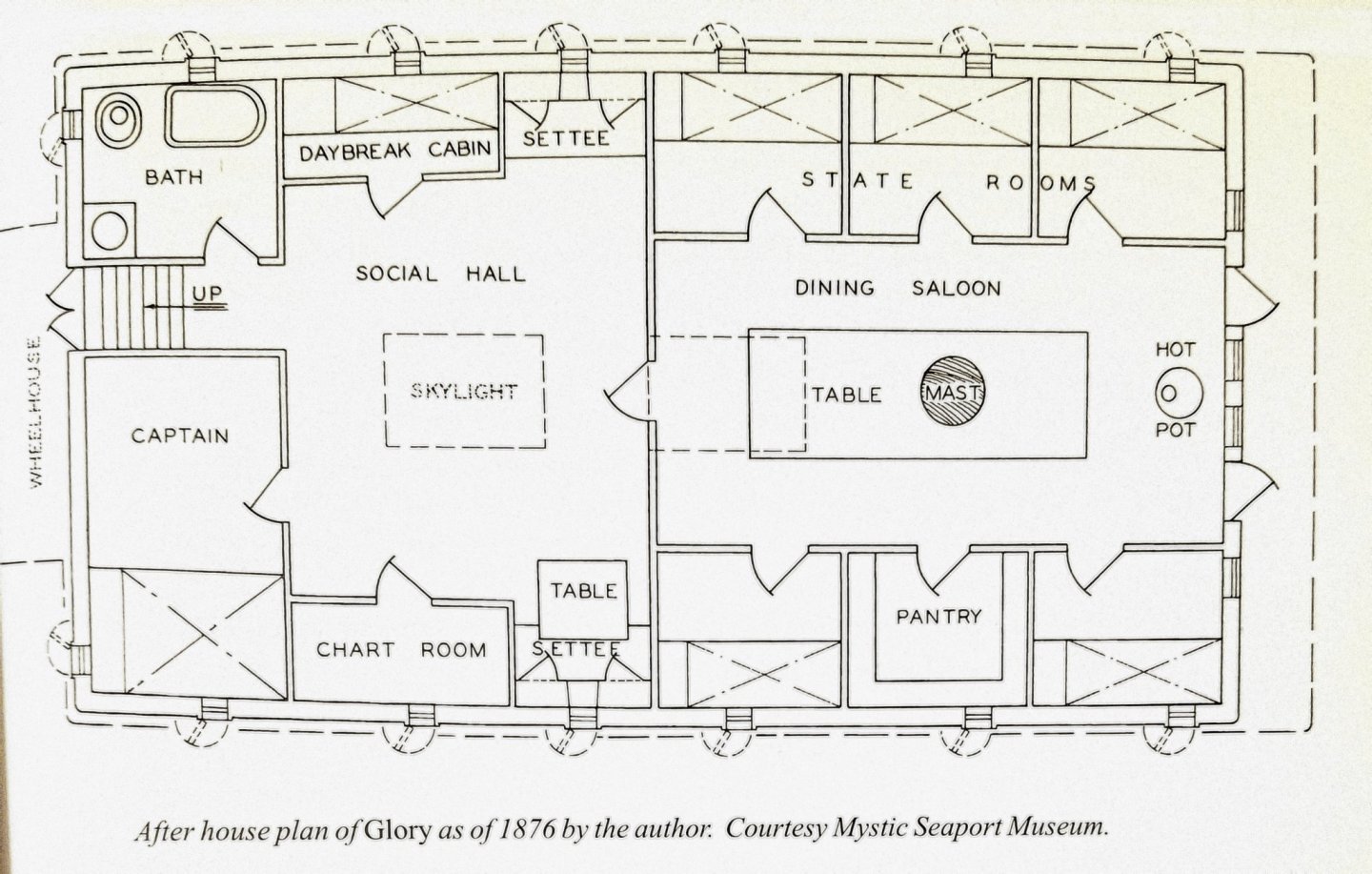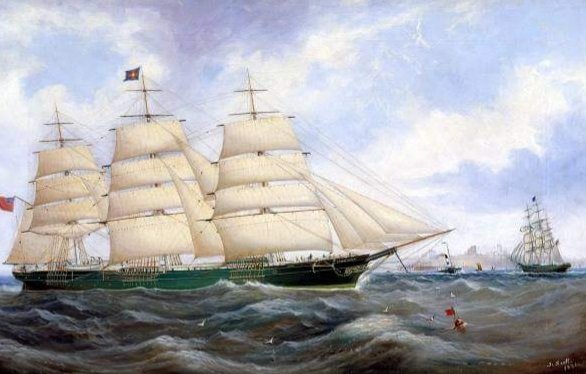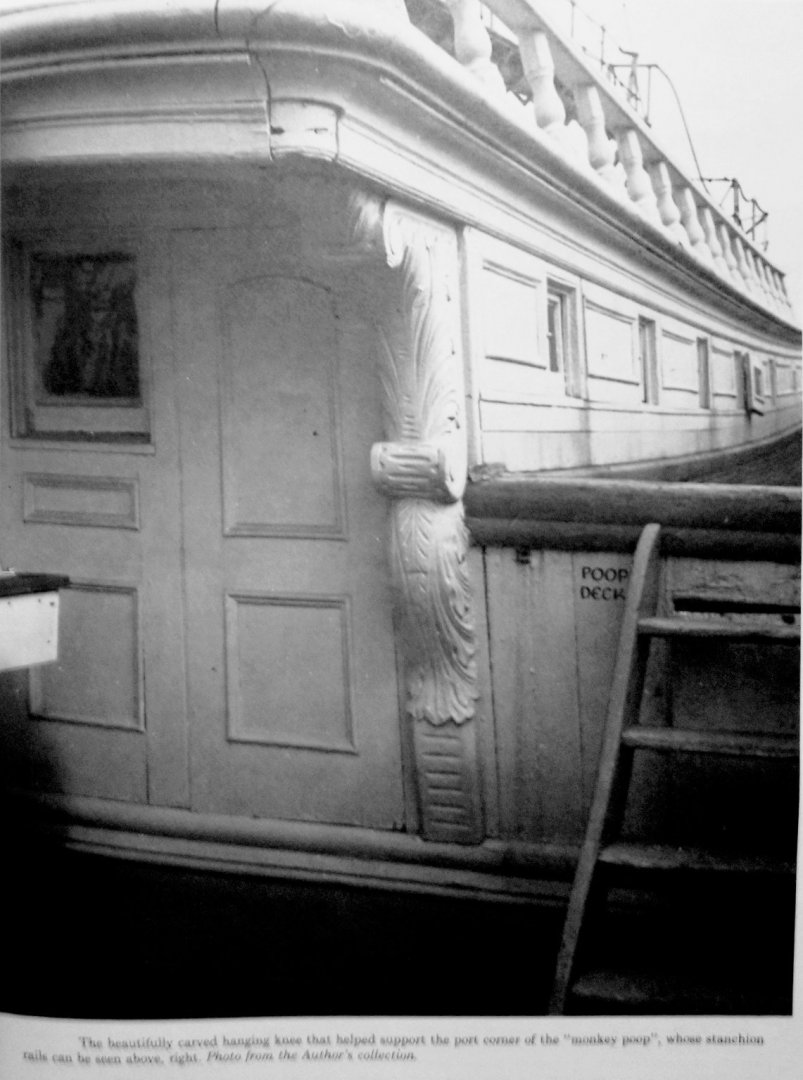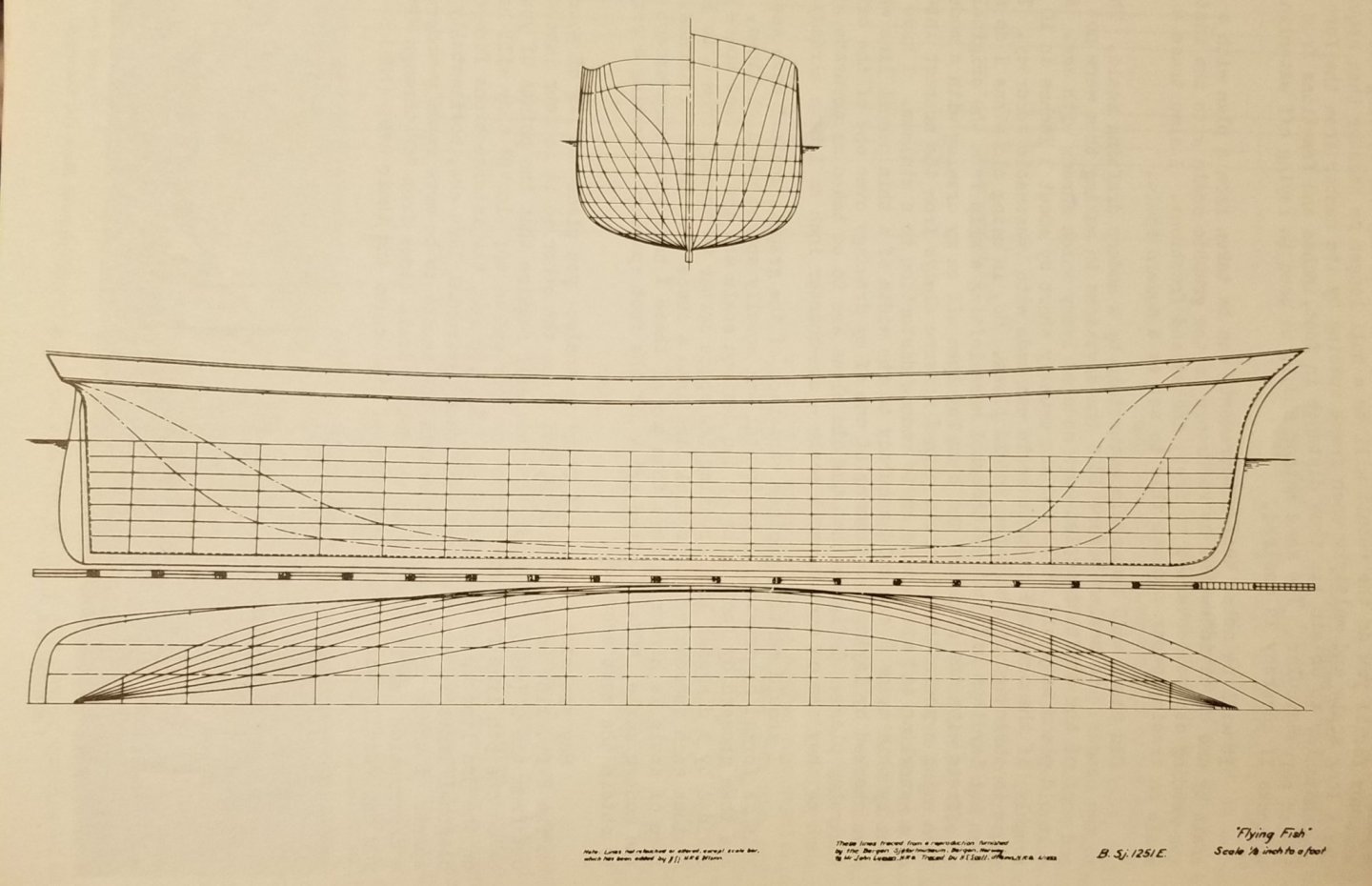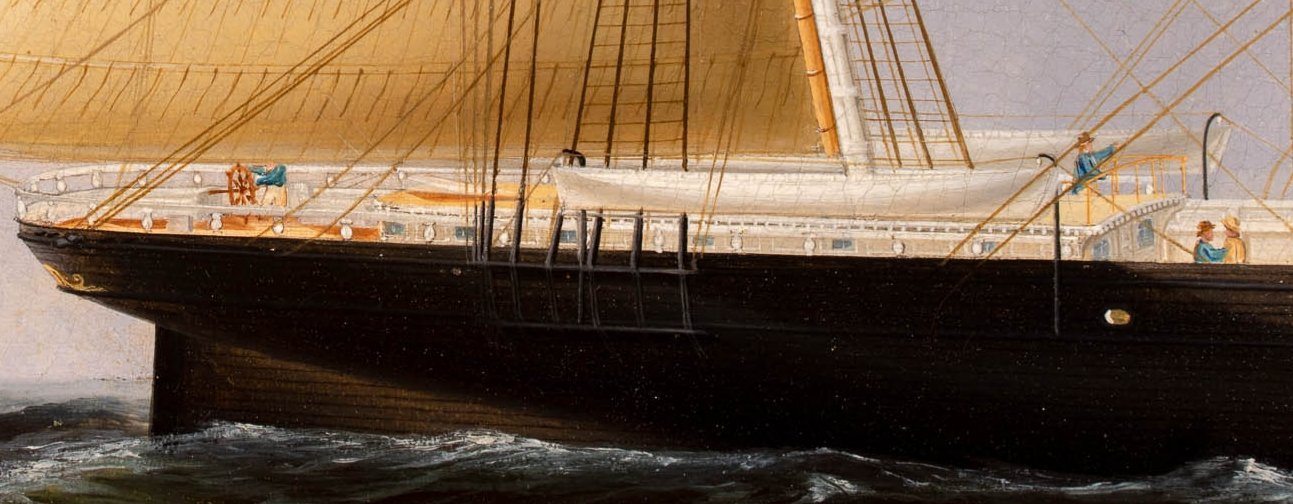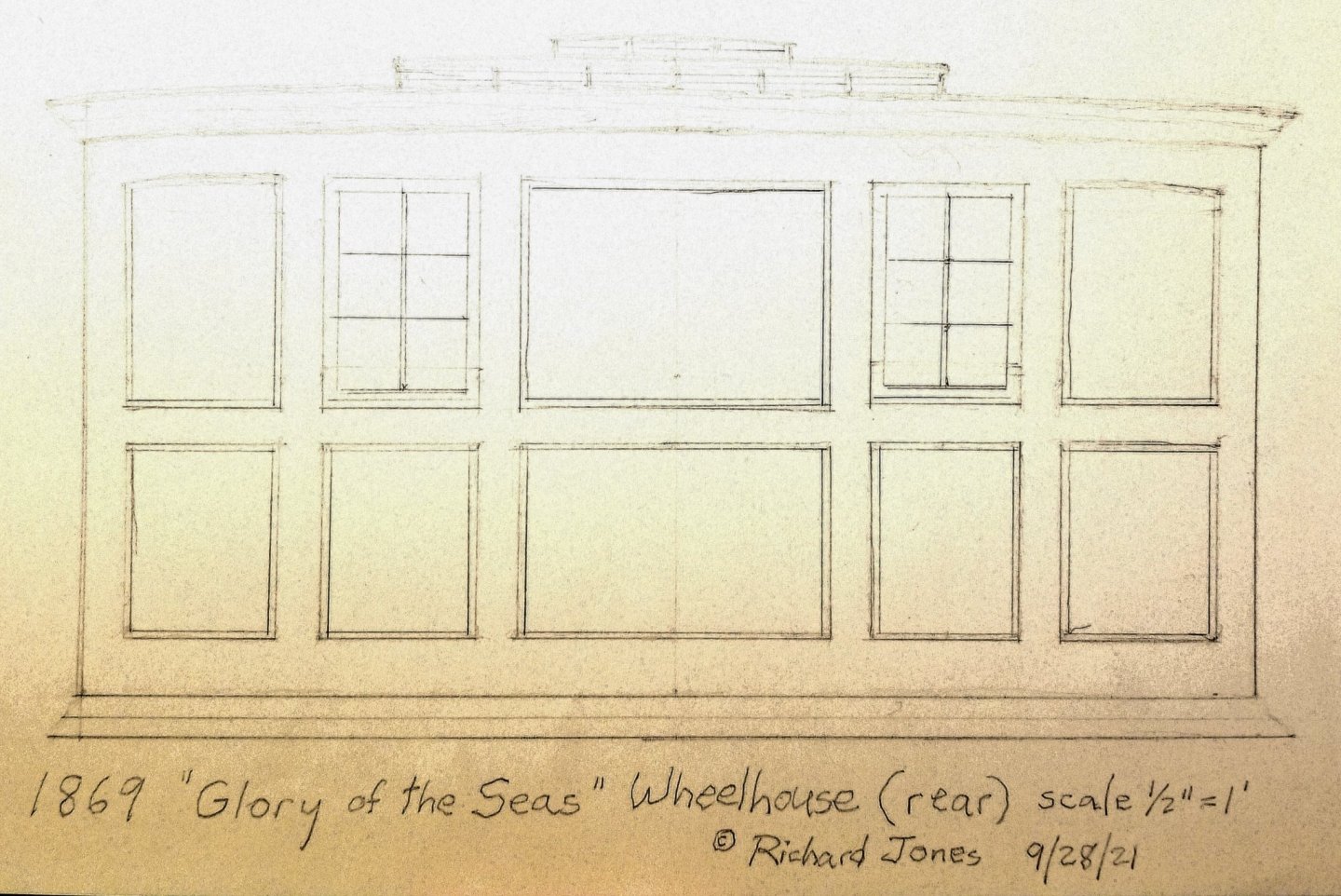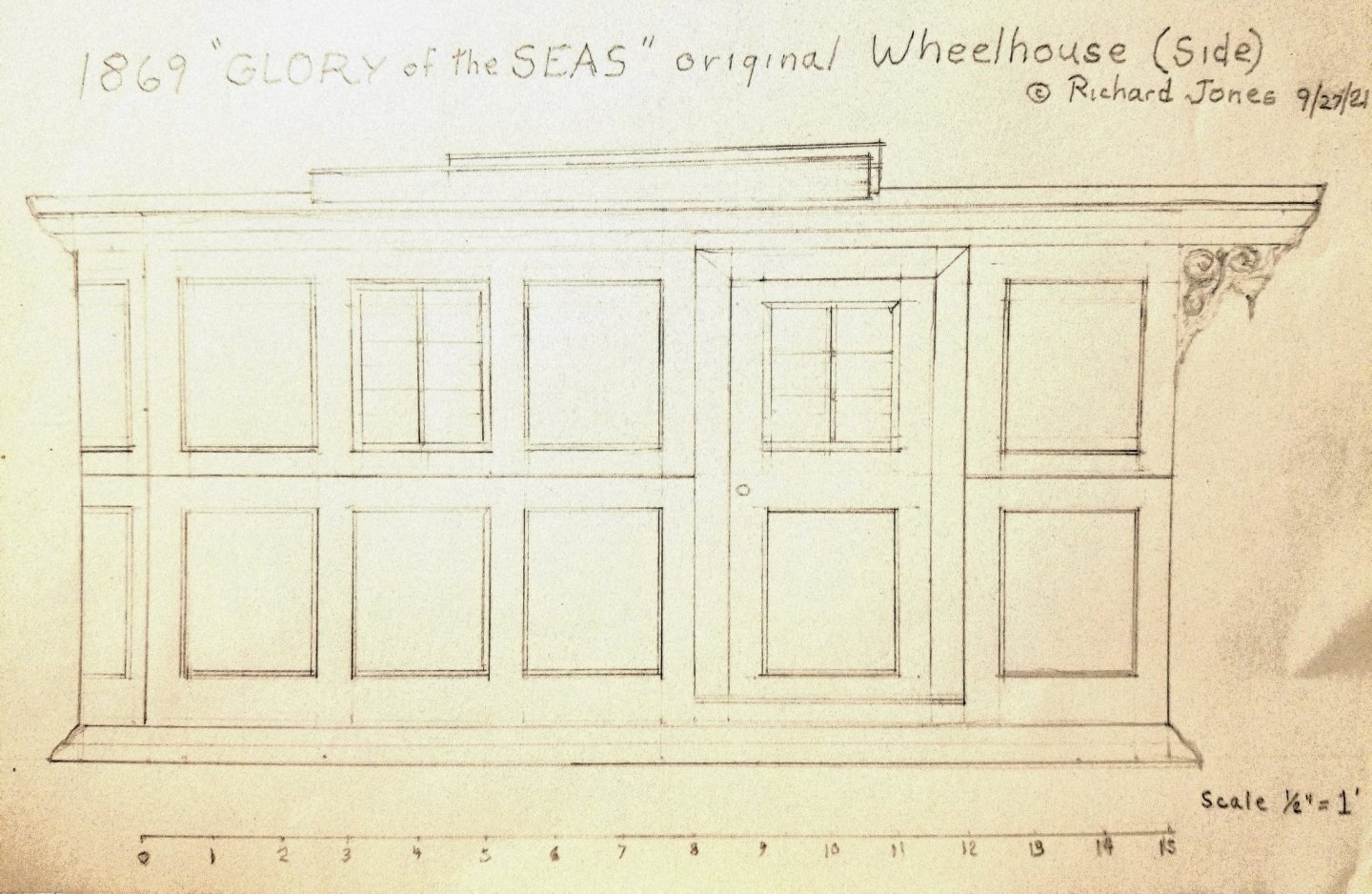-
Posts
2,152 -
Joined
-
Last visited
Content Type
Profiles
Forums
Gallery
Events
Everything posted by ClipperFan
-
George K, while it won't give the same impression as seeing a comparison of real vessels side by side, once Rob completes his 1:96 scale "GLORY of the SEAS" replica, she can be placed next to his completed 1:96 scale "Cutty Sark." Few people today realize how gargantuan Donald McKay's Clippers really were. For instance, "Cutty Sark's" keel was 203' while Glory's was 240'! While it may not sound like much, Glory's keel was 15% longer than Cutty's. Both of these vessels were launched in the same year too, 1869. One of the things that stunned the British Shipping Community was the towering sizes of American built Clippers. I'm sure Glory would have dwarfed Cutty and "Flying Fish" would still probably be larger too.
- 602 replies
-
- Flying Fish
- Model Shipways
-
(and 2 more)
Tagged with:
-
Vladimir, here's my sketch of the rear companion way entrance to the Rear Carriage House. It's still in process but only since the final shape of the turned pedastals isn't quite satisfactory yet. Since there's no photographic evidence of this particular structure, I've gone with a style that echoes that of her front fascia. Most companions had duel opening doors and the top would slide up and back. Like the skylights, I figure this structure too would offer benefit of glass behind venetian blind type natural wood. Since I saw the lower embellishment on the rear of the House, I've included them on the entire back of the house as well.
-
Rob, a laudable effort, nicely done. Unfortunately it also highlighted the limitations of the Revell Cutty Sark hull filling in for the far more substantial Glory one. You get an A+ for innovative thinking. I don't believe anyone else has ever tried modifying the CS Hull for an American Clipper before. This effort is what first led me to you also.
-
Rob, perfectly said. I believe that concept, of seeking to recreate Glory as accurately as possible through the use of Michael Mjelde's rare and beautifully clear photos can be the basis for our NRG article. We can walk readers through the step by step process we have taken to literally "reverse engineer" McKay's last, longest lived Clipper.
- 3,560 replies
-
- clipper
- hull model
-
(and 2 more)
Tagged with:
-
Rob, my annual licensing studies have kept me from being able to participate as much as preferred. Your bumpkin work details are just beautiful.
- 3,560 replies
-
- clipper
- hull model
-
(and 2 more)
Tagged with:
-
Vladimir, it's truly amazing how two models, in two different scales end looking so remarkably similar to each other. It's a tribute to the modeling skills of you and Rob. Before you pop the bubbly for the completion of your Hull build, there's the little matter of a companion way entrance to the rear of the Carriage House. From Mike's floor plan layout, you can see where the original companion way would have been. Located on the Port rear, from his other ship's lines, it appears to be 5' deep, probably 3' high above the Carriage House deck by 3' wide. It most likely would have had thin double doors and an angled sliding top too.
-
Rob, nice to see you back in action on your lovely ship.
- 3,560 replies
-
- clipper
- hull model
-
(and 2 more)
Tagged with:
-
Rob, I think that's also why author Michael Mjelde has mentioned the idea of doing an updated article on "GLORY of the SEAS" for publication in Nautical Research Journal. We might all want to decide how we would describe this painstaking recreation journey of ours in a manageable way to share with the good folks at NRG.
- 3,560 replies
-
- clipper
- hull model
-
(and 2 more)
Tagged with:
-
Rob, actually for a cheap model under $3.00 in the 60s, Revell's "Flying Cloud" built into a decent model which at least replicated her lofty rig fairly decently. Her small scale also enabled her to be easily displayed anywhere. However, they made the right decision modeling "Cutty Sark" in the larger scale for accuracy.
- 3,560 replies
-
- clipper
- hull model
-
(and 2 more)
Tagged with:
-
Rob, "Flying Cloud" was 20 years old by the time this gorgeous painting of her was done. By then she was under British ownership, her lofty 3 skysail rig has been greatly cut down and her Hull is a lovely shade of green. Regardless, she still retains her beautiful trumpet bearing angel, this time accurately portrayed mounted on her gold embellished carved cutwater just below her carved, gilded naval hoods. Ironically, today there is not one model of "Flying Cloud" that accurately replicates these intricate features. Instead, they just portray a bare stem with the angel figurehead awkwardly tacked on underneath her bowsprit. Even the three quarter scale reproduction, built in Nova Scotia, berthed in Boston in the '70s followed that exact practice . I know, because I saw her there in the early '70s. It's just one of many reasons why I consider our painstaking recreation work on Glory so profound. To me, she's the "Rosetta Stone" of Donald McKay's Clippers.
- 3,560 replies
-
- clipper
- hull model
-
(and 2 more)
Tagged with:
-
Rob, Revell could have made a larger model of McKay's Clipper "Flying Cloud" but chose to do "Cutty Sark" instead. It's just as well since there never has been an accurate reproduction made of a McKay Clipper. Probably the most accurate contemporary painting of "Flying Cloud" is this 1871 one by John Scott 'Flying Cloud off Whitby, North Yorkshire' Notice how similar her Bow treatment is to Glory's.
- 3,560 replies
-
- clipper
- hull model
-
(and 2 more)
Tagged with:
-
Vladimir, I shared this image so you could see how well embellished these vessels actually were. The tricky aspect for modelers is to keep these really fine details to scale. While including such fine touches helps to establish how ornate these ships truly were, if the added details are too large, it throws everything else off. Some of these might be better done with painting impressions instead. Just a thought.
- 3,560 replies
-
- clipper
- hull model
-
(and 2 more)
Tagged with:
-
Rob, this book was another fortunate find from Abe books. It's #20 of 100 exclusively signed by the author. A nice bonus surprise was a personal letter of gratitude from him to the previous owner who apparently made a lot of contributions to his efforts, in the form of rare photos. Without which, the author himself admitted his book would have been pretty thin! Considering the Packard was a Maine Downeast vessel built 20 years after Glory, it's not much of a stretch to consider McKay's vessel was a precursor to that style of vessel. Much like his "Great Republic" with her 4th "Jigger Mast" led the way to the massive steel 4 masted Barques just a few short years later. McKay was described as a restless innovator, constantly striving to reach his vision of maritime perfection with every new vessel he built.
- 3,560 replies
-
- clipper
- hull model
-
(and 2 more)
Tagged with:
-
Rob, Vladimir & George K "A Portrait of a Ship, the Benj F Packard" was recommended to me by Michael Mjelde in order to get a look at the Wheelhouse. While there are some useful images of that structure, what impressed me more was this image of the Packard's Rear House. This beautiful scene shows her massive sculptured corner bracket as well as the elegant touches all along the front and sides. This is very similar to how both Glory and "Flying Fish" houses would have looked too
- 3,560 replies
-
- clipper
- hull model
-
(and 2 more)
Tagged with:
-
- 602 replies
-
- Flying Fish
- Model Shipways
-
(and 2 more)
Tagged with:
-
Vladimir, two observations: (1st) and perhaps most jarring to me at least, is that the word "Boston" is slightly misaligned. In previous pictures, it sat perfectly parallel to the molding below. Since it's so golden & beautiful, being crooked like it is now only draws the wrong type of attention to it and detracts from the overall lovely impression. (2nd) very nice job on the Wheelhouse. The recessed areas would have been painted "pearl." Incidentally we do have an example of that shade. In his massive oil of the "Flying Fish" James Buttersworth illustrates her pearl Bulwarks. It's a lovely very light off white shade of beige.
-
Vladimir, thanks for the compliment on my Wheelhouse efforts, it's greatly appreciated. On another topic. I found a reference to the Sailors' lodging being in the Bow of the ship, below deck under the forecastle. Ironically I rediscovered it while trying to get more details for George K's "Flying Fish" build. This is directly from Duncan MacLean's "Boston Daily Atlas" November 4, 1851. "She has a top gallant forecastle the height of the main rail [which was 4 & 1/2'], and in the wings are companions, which lead to the sailors' quarters below; and before the companions are water closets, and along the sides lockers, etc. The accommodations for the crew occupy the angle of the bow, are lofty, well lighted, and ventilated." Now I don't know about you but to me a height of 4 & 1/2 feet isn't lofty, not even in the 1850s! So, unless the crew of the "Flying Fish" were all midgets, which is total nonsense, their lodgings were downstairs, probably 3 feet, so that their lodgings would be 7 & 1/2 feet high. In a similar way, the same slight drop in "GLORY of the SEAS" would have resulted in 8 foot high barracks under the Forecastle.
-
Rob, you're most sincerely welcome, it's my pleasure and a way to express my gratitude for establishing this group and getting me the introduction to my favorite Glory author, Michael Mjelde. On the other topic, while he's mentioned doing an updated article in Nautical Research Journal he didn't say anything about including my work in his latest book. Although I did send double prints to him, so that he could forward copies to Ron Haug, his friend "Downunder." However, If you'd like to put in a good word for me, it would be greatly appreciafed.
-
Vladimir, to paraphrase the famous quote, the prints are in the mail. By now Rob should have gotten his. Delay was due to a "Goldilocks challenge". Seems like I just couldn't get the darkness just right. Due to limitations in copies, I couldn't get Rob all 3 prints, so I sent the 2 darker ones. In your case Vlad, I sent all 3. Since I'm not charging Rob for his shipping, it wouldn't be fair to charge you, just because you live in Serbia. I'm curious to know when you receive yours, it's coming in a big 2' tube, well sealed.
-
Rob, there's no deadline on either yours or Vladimir's project. I imagine there might be one for your telescope. I'm fascinated by that. Hubble has given us incredibly detailed images which give us a greater understanding of how unbelievably vast our Universe truly is. Meanwhile from what I read recently, the new telescope which appears to be 5x larger than Hubble will blow us all away.
- 3,560 replies
-
- clipper
- hull model
-
(and 2 more)
Tagged with:
-
Rob, I'm honored that you appreciate my input so much. It helps me to stay inspired knowing the work I'm doing is making a difference for you guys.
- 3,560 replies
-
- clipper
- hull model
-
(and 2 more)
Tagged with:
About us
Modelshipworld - Advancing Ship Modeling through Research
SSL Secured
Your security is important for us so this Website is SSL-Secured
NRG Mailing Address
Nautical Research Guild
237 South Lincoln Street
Westmont IL, 60559-1917
Model Ship World ® and the MSW logo are Registered Trademarks, and belong to the Nautical Research Guild (United States Patent and Trademark Office: No. 6,929,264 & No. 6,929,274, registered Dec. 20, 2022)
Helpful Links
About the NRG
If you enjoy building ship models that are historically accurate as well as beautiful, then The Nautical Research Guild (NRG) is just right for you.
The Guild is a non-profit educational organization whose mission is to “Advance Ship Modeling Through Research”. We provide support to our members in their efforts to raise the quality of their model ships.
The Nautical Research Guild has published our world-renowned quarterly magazine, The Nautical Research Journal, since 1955. The pages of the Journal are full of articles by accomplished ship modelers who show you how they create those exquisite details on their models, and by maritime historians who show you the correct details to build. The Journal is available in both print and digital editions. Go to the NRG web site (www.thenrg.org) to download a complimentary digital copy of the Journal. The NRG also publishes plan sets, books and compilations of back issues of the Journal and the former Ships in Scale and Model Ship Builder magazines.

